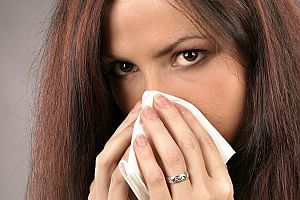One thing is certain: food allergies are on the rise. According to a 2013 study by the Centers for Disease Control and Prevention, there were 50% more food allergies in 2011 than there were in 1997. An estimated 15 million Americans have food allergies, and the numbers are increasing. Four percent of the population has a food allergy now, as opposed to only one percent ten years ago. What is not so certain is what is causing this increase in food allergies. Experts believe it is likely due to a few different causes, including over-cleanliness, reluctance to feed children certain foods at an early age, and the quality of the foods we eat. It may also be that physicians are becoming more skilled at recognizing the problem and, therefore, that food allergies are diagnosed more frequently.
One interesting thing to note is that American children are more likely to have food allergies than children in other nations. It may be due in part to Americans being better-off than people in other countries. The CDC noted on their website that, “Food and respiratory allergy prevalence increased with income level. Children with family income equal to or greater than 200% of the poverty level had the highest prevalence rates.”
Experts surmise that the immune systems of people in poorer and undeveloped nations get exposed to pathogens far more often than people in nations with higher standards of cleanliness and more access to antibiotics. Exposure to a wide range of microbes at an early age helps to ensure that the immune system is kept busy and learns early to recognize the difference between a dangerous microbe and a harmless one. Many children in the US now grow up in homes so clean that they encounter relatively few germs until they are exposed to them in school.
Another issue is the reluctance of parents to feed their children foods that may possibly cause an allergy. For example, some women avoid eating peanuts during pregnancy and will not feed them to their children until they are older. However, if we look at the rate of peanut allergies in Israel, it is far lower than that in the US. The primary difference between the two countries is that Israeli parents feed their children peanut snacks at a far earlier age than American parents do.
The American diet also consists of far more processed foods and GMOs than the diets of other countries. The side effects of genetically modified foods have still not been thoroughly investigated, but more studies are finding health issues in animals fed genetically modified foods. In addition, conventionally-raised meat in the US is typically fed hormones and antibiotics, which may be wreaking havoc with our own immune systems when we eat meat from these animals.
Extensive pesticide and herbicide use can also increase the risk of food allergies. A study published in the Annals of Allergy, Asthma, and Immunology found that people exposed to chemicals called dichlorophenols (DCPs) were more likely to develop food allergies. These chemicals are created when common pesticides and herbicides break down. People with the highest level of this chemical were more than twice as likely to have a food allergy.
The best thing you can do to help ensure that you and your family do not develop food allergies is to eat whole foods from reliable sources as often as your household budget will allow. Organically-grown foods may be one part of the answer. To be labeled “100% organic,” foods must not have been exposed to pesticides and herbicides, has not received hormones or antibiotics, and cannot be genetically modified. In addition, don’t be afraid of getting dirty! Regular exposure to germs helps keep your immune system exercised and it will be less likely to overreact to harmless microbes.

